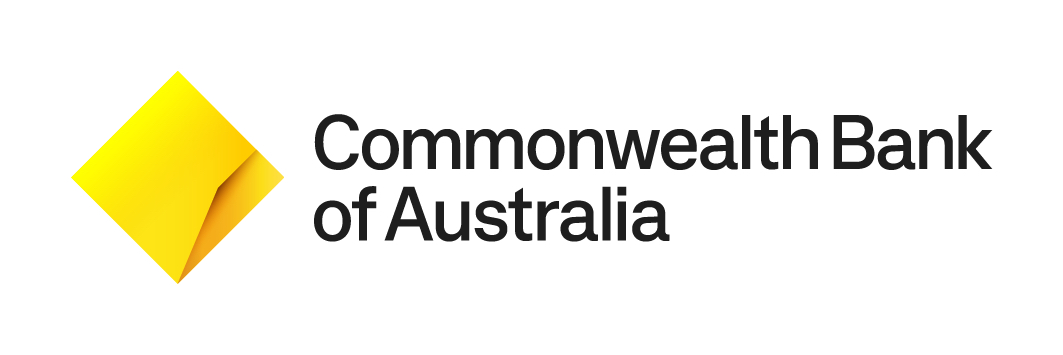
Australian credit market adapts to latest turn of the cyclical wheel
The Australian corporate credit market has shown resilience in 2022 despite heightened uncertainty and volatility. Inflation, rising rates and geopolitical risk – a potent mix that might once have led to Australian credit seizing up – have not stopped primary issuance. Participants at a Commonwealth Bank of Australia-KangaNews roundtable in April discuss the maturing Australian credit market’s pricing and deal execution value proposition.

MACRO RISK FOCUS
Swiss The credit market has clearly become more challenging. Is this due more to the interest rate, inflation and policy backdrop or the emergence of serious geopolitical risk?
MEDEIROS It is a confluence of two main factors. The first is the ongoing normalisation of monetary policy and interest rates in the developed world, which intensified in the second half of 2021 when the US Federal Reserve gave the market indications it would tighten policy to address high inflation. The Russia-Ukraine conflict, and associated commodity price pressures, then compounded the issue and spread widening accelerated as a result.
Spreads in the US have tightened recently, primarily reflecting hopes of a resolution of the conflict and higher yields, while spreads in Australia have stayed relatively wide, suggesting investor caution.
Looking ahead, we are closely watching monetary policy developments as well as inflation and rates, and their impact on economic activity and credit fundamentals. It seems upward pressure on spreads is likely to continue in the near term, until there are signs inflation risk is falling.
Swiss Do investors think market dynamics in March are a result of short-term volatility or will the challenge persist over the longer term?
MASON It is a longer-term issue. The Russia-Ukraine conflict was an accelerant of market moves but high inflation is a concern and the real risk is a central bank policy mistake. The Fed is hawkish and we already know there are several rate hikes priced in this year.
Whether markets are prepared for the reality of what this means is a different story, especially considering we have had such a supportive environment for risk assets for such a long time. We hear that inflation is transitory but some of these issues seem to be hanging around without resolution.
BAYLEY As shocking as the Ukraine situation is, war generally affetcs financial markets in the short term and they can get over this type of shock fairly quickly. In this case, the conflict fed into one of the major concerns in the market that was already raising its head: the inflation genie being out of the bottle and how the Fed and other central banks will control it without significantly crushing growth.
As the spectre of stagflation rears its head, we have had the signal of an inverted yield curve. This typically leads to a recession 18-24 months down the line, which has an impact on credit. It may affect the US more than Australia as the effects will be greatest in the high-yield space and we have a more high-grade market here.
For us, the trajectory of rate hikes is the main story and this will be the case for the next six months to a year.
Swiss How do the differing approaches of the Fed and the Reserve Bank of Australia (RBA) affect the way investors are thinking about the market?
VAN KLAVEREN We were at the point of the cycle turning. Central banks had begun tightening financial conditions via higher rates and stopping QE, with QT also coming in. But then credit markets moved further than I would have thought on the back of the Russia-Ukraine situation. We have seen a decent rally in offshore spreads while Australian spreads have stayed wider.
The cycle has changed but the big question is where the Fed will go with terminal rates relative to the RBA. The Fed has indicated that 2.5-2.75 per cent might be the terminal rate. If fundamentals are strong and corporates can pass cost increases onto end users, they can stay reasonably robust. However, if the Fed has to go higher and harder than expected this will have a broader effect on markets and credit spreads.
"As the spectre of stagflation rears its head, we have had the signal of an inverted yield curve. This typically leads to a recession 18-24 months down the line. It may affect the US more than Australia as the effects will be greatest in the high-yield space and we have a more high-grade market here."
Swiss How is inflation affecting issuers’ funding programmes?
BLACKSTOCK It is a secondary consideration for us. Interest rates rising may reduce some of the headwinds on the net interest margins we have seen in the last couple of years. But the bigger consideration for us is how it affects market appetite and access.
So far this year we have seen periods of good markets and periods of volatility. We take the view that when markets are good we should be thinking about access. We do not claim to have any insight into what the rest of the year will look like. There is a fair amount of uncertainty with recovering economies relative to central bank action to address inflation.
The current period has challenges, but I would not call it challenging. When we did a US dollar transaction in early March, it was a much trickier decision. There was a lot more uncertainty – the Russia-Ukraine conflict had only just started and we saw a market that was widening. That was an interesting decision to make, but the most important thing was that investors were engaged.
In contrast, we felt more comfortable with the tier-two transaction we recently priced in Australia. The market had been recovering, there had not been any recent supply and we saw a reasonable window of opportunity. We are back in funding markets now and when there are good windows we will consider them.


FENNELL What is happening in the broader market environment is front and centre when we recommend an issuer moves forward with a transaction. Market participants have become used to crisis-type situations in recent years. This makes it challenging to differentiate what is an actual crisis and what is just a normal change in the cycle.
I am of the view that the market is going through a natural adjustment to higher inflation and what a rising rate environment looks like, including how it will affect yields and credit spreads. There are indeed risks and we will deal with them, but the market is unlikely materially to improve while the Russia-Ukraine conflict persists.
BLACKSTOCK We were not expressing a view on spreads by going ahead with the tier-two transaction or suggesting that things will not get better. Our view was that the market was there and receptive, and we did not know what it would be like in 6-8 weeks. We have reporting windows and peer supply that we must navigate.
VAN KLAVEREN One thing that takes uncertainty away from a transaction is pricing. If there is enough in the spread to account for uncertainty or potential volatility, a deal will attract investors. Over recent weeks, US issuers have been offering a premium of 18-20 basis points over the secondary curve to get deals away. This is different from our market.
BAYLEY There is a central path where the issuer and investors are happy – or perhaps equally unhappy. During this volatility, issuers in the US have paid up to 20 basis points in new-issue concessions and sometimes even more.
But this mentality is not in evidence in the Australian market. Issuers are trying to price on top of their existing curves. If they want to get a receptive deal, they need to meet demand. Commonwealth Bank of Australia (CBA) has typically been receptive to market demand but not every issuer – financial or corporate – is as respectful.
BLACKSTOCK We are aware new-issue concessions exist. Sometimes they are not necessary because the market is so hot and at other times they are appropriate. For us, they are also a gauge of market and risk appetite.
In the middle of March, new-issue concessions were increasing. Sometimes this is detrimental to the market because it can reprice secondary, which is in neither the issuer nor investors’ interest.
When we launch a deal, we try to get the right outcome and play the cards we have at the time. In January, we paid a new-issue concession that we thought was the right balance between the issuer and investors.
Market grapples with wider spreads and new-issue concessions
Wider spreads have coloured the primary issuance market in 2021, as rejuvenated bank supply and volatility influence pricing. Investors and issuers share their challenges navigating the market’s new normal.
MEDEIROS There is not much science behind the level of new-issue concessions – it is a combination of many forces, including supply and demand and investor risk appetite.
For example, in the US the range since mid-February to last week was 2-35 basis points. Overnight it was around 14 basis points in the US. In Australia, we had the AusNet Services transaction a week ago on which the new-issue concession was 22 basis points. It would be a bit tighter today as markets have improved since that transaction.
MASON Spreads must go wider with the return of rising rates and the unwind of central bank balance sheets. This was always going to happen and the conflict in Europe has expedited it. We have seen a rally recently, but I do not think spreads will keep rallying over the longer term. They will widen further, but this is just part of normal market operations.
We have been above our LCR target level through the whole pandemic period. There is every possibility we could bring it down back to within the target – this is one of the levers we can pull.
Swiss How is the market environment affecting Macquarie Group’s funding strategy?
EGGLETON All four of our business units have been growing strongly over the last two years. As a result, we have become a much more programmatic issuer than we were five years ago. The market is what it is and therefore we need to be pragmatic about what the price is for this funding. We need to work closely with our DCM relationships to ensure we have confidence and we are not forcing a deal that does not work for our investors.
To help navigate our growing funding task, we have been diversifying our access to a variety of global markets so we do not feel forced to push a deal into any particular market at any point in time.
We are also focused on ensuring we are sending price signals for credit or rates to our business units as quickly as possible. This means they can make conscious decisions about whether their return hurdles are being met and, if they are not, they have a chance to pull back. This reduces our funding requirement. Even though credit spreads might be expensive, it still might be the right deal to do if the businesses are being appropriately compensated for the cost of credit on the asset side.
Swiss How have these bigger-picture inflation-related issues been weighing on corporate strategy?
LARKIN From an operational perspective, about 30 per cent of our spend on fixed-price contracts is not procured. Most of this relates to employees and trades. Things like concrete, steel and facades are already purchased. To the extent there is exposure in development and construction it will also predominantly be employees and trades costs. When it comes to our investments, it should be noted that rental income is generally regarded as a good hedge against inflation.
VAN DER GEEST We have been in an all-time low interest rate environment for a quite long time. Expectations are now shifting and there is volatility as rates normalise. Currently, the market is determining the new normal as central banks including the RBA manage multiple demands. It is clearly not a simple equation.
We will see where rates will settle in the fullness of time – what the domestic and global economy can sustain. The airport is a repeat issuer, so we must be able to take advantage of all markets and use hedge overlays to manage risk if required.


IN CASE OF EMERGENCY
Swiss It has always been said that issuers can rely on the US market in times of volatility. But in recent months the US has been at the centre of global market upheaval. From an issuer’s perspective, does this mean the domestic market is becoming a safe haven?
EGGLETON The US market has been available, we just have to pay the price. We did a US dollar deal a couple of weeks after the Russia-Ukraine conflict started. It was definitely tougher going than our last US dollar transaction, in October 2021, but we still ended up printing our second-largest volume bond issue ever. Investors were happy to support the deal, as long as they felt they were given enough incentive via a larger new-issue concession to compensate for the more volatile conditions.
All global credit markets seem to be operating better now but the Europe and the UK really shut up shop for a period, apart from covered bond issuance. The Australian market has held up relatively well and seems more resilient than it was in the past.
O’Leary Have users been surprised by the resilience of the Australian dollar credit market this year?
BAYLEY Whenever there is a shock in any market investors retreat. There has been talk of duration – and there tends to be a focus on mid-term tenors when a market opens again. For us as an absolute-return house, our current preference is in mid-term tenor anyway. Issuers that think it is an expensive time to come to market and pay a 20 basis points new-issue concession might be better off doing a two-year rather than a 10-year transaction.
On the investor side, everyone left the market when the initial volatility happened. They have come back slowly and started to play again. The natural progression is to have shorter-term deals before the market is back to being fully open.
VAN DER GEEST The domestic market is not where it was five or 10 years ago. It has matured and been there for sizeable transactions in recent years. We saw this again in trades last year.
One of the benefits of coming to the home market is that local participants understand the credit and the environment. Coming out of COVID-19, European investors had little idea what was happening in Australia, and how we as a country and airport responded. It would have been harder to sell there. This is why we are really pleased with domestic appetite.
We do not have many maturities in the domestic market but I would be more than comfortable to come back to Australian investors to build out a different part of the curve. This is a key focus for Melbourne Airport.
VAN KLAVEREN The Australian market has really matured and come of age over the last two years. Things have changed – and I can point to three factors to show this.
First, for years we were on panels debating the ability of triple-Bs to print 10-year deals. COVID-19 comes and what did we see? A whole lot of 10-year triple-Bs came to market with good size, investor demand and liquidity.
Second, tier-two was traditionally listed, retail and illiquid. Today, the liquidity in tier-two is amazing and the number of banks able to make two-way markets is fantastic.
Finally, this year we are seeing sizeable fixed-rate tranches in the bank senior-unsecured market. It is great to see more offshore long-only money in fixed-rate tranches – it gives diversity of product and investors. It is also truer pricing compared with floating rate, which balance sheets will buy and on which pricing always looks tight.
MEDEIROS On the fundamental side, previous periods of market volatility coincided with some concerns about the Australian housing market. We do not have this now, though let’s hope interest rates do not rise too much. We also had concerns when commodity prices declined substantially. Now it is the opposite story – higher commodity prices boost our terms of trade, which is good for our gross domestic income.
Also, corporate Australia’s leverage, in aggregate terms, is currently around record lows based on aggregate debt to aggregate earnings. This is a positive fundamental story for credit and is providing resilience to the domestic market.
VAN KLAVEREN Australian corporates not having to issue is actually good for investors. If corporates do not have to print a deal, investors do not have to report big, negative returns to end clients. We generate higher information ratios and credit looks more attractive from a risk-return perspective.
MASON We are still surprised about where some triple-B names are currently trading. The slower rate at which these triple-B bonds were absorbed back into portfolios demonstrates it is still a relatively illiquid market here, particularly given several of the issuers are characterised by a regulated income stream or are monopoly infrastructure assets. It comes down to supply and demand dynamics.
Sustainability evolves but supply is lacking
Investors and issuers are confident Australia’s green, social and sustainability (GSS) and sustainability-linked bond (SLB) market is developing, but more supply is needed to catch up.
LARKIN We have had a couple of recent experiences with deals when markets were choppy. I am absolutely convinced we were able to print these deals because they were ESG [environmental, social and governance] financings.
The value of labelled deals is a debate that will no doubt continue, but we have certainly seen incremental demand and interest. Sustainability is a competitive advantage for our business and we will take any opportunity we can to talk to investors about ‘mission zero’, which is our goal to achieve absolute zero scope-one, scope-two and scope-three emissions by 2040. We think this is a constructive entry point to talk about the business and the credit.
We have also set up our deals so that – whether it is a sustainability-linked loan [SLL] or an SLB, whether it is issued by Lendlease headstock or a managed fund – the targets are all consistent with our overall emissions schedule and we can use the same structure for any product. Whether we select a use-of-proceeds or linked mechanism, it is not about the ease of execution but about what suits the facts and circumstances of the borrower.
ESG is fully integrated into our process. If an issuer is poorly rated from an ESG perspective, it will not get funding no matter what the price. The only challenge is how green is green.
O’Leary The Australian dollar market has shown its ability to offer intraday execution. But we have heard some investors, including at least a few domestic accounts, saying they have reduced bids because of lack of time to complete due diligence. What is the best approach for all?
FENNELL This is another area where we are seeing the maturity of the Australian market. There is less need to do an IOI [indication of interest] and investors have been very forthcoming with feedback on the back of roadshows. This has given syndicate desks a lot more comfort on where they should set the price before launching. This is a positive development.
The market has come a long way. If I think back several years, there was no transparency in the bookbuild process. We run through a lot of manual processes and we have moved somewhat toward trying to narrow what the range of potential print volumes might look like to give more indication and transparency early on.
We used to go through a longer process over several days. Nowadays, there is a lot more two-way dialogue post roadshows. We get better, quicker feedback. This reduces risk for everyone.
VAN DER GEEST We have held investor call updates every six months and we continued this through COVID-19. We also provide investors the opportunity to engage with us directly.
We certainly give an indication of our near-term funding requirements on debt investor calls, to ensure there are no surprises and to provide investors the opportunity to remain current on our credit. We respect that investors may have needed extra time to assess the credit when we came to the market last year because the focus was more on forward-looking outlook than historical financials.
We would not go in and out in a day but every issue is different depending on where we are in the cycle. Everyone on both sides of the equation needs to provide appropriate time. We rely on our lead managers to talk to us and give us execution advice.
LARKIN There was a time when issuing in this market was like putting together a club deal. The fact that we can now talk about intraday execution as a regular occurrence represents enormous progress.
This said, we always try to ensure we give investors time to do their credit work. It is possible to manage a timetable and an execution process to allow this.
"The slower rate at which these triple-B bonds were absorbed back into portfolios demonstrates it is still a relatively illiquid market here, particularly given several of the issuers are characterised by a regulated income stream or are monopoly infrastructure assets. It comes down to supply and demand dynamics."
VAN KLAVEREN If it is a known entity and the company has good connectivity to the investor base, we can come back with a price pretty quickly. The only reason we would not participate is if we are bearish credit or we want a bigger premium. The Australian market can launch and price a deal in one day, no problem.
One thing that is getting better but can be a bit vexing is knowing what the size of the deal is. This is not always made clear – and if we do not know how big a deal is we cannot know what to bid for. This slows the process as we wait for clarity.

EGGLETON Part of our market diversification strategy over the last 12-24 months has meant we have had to spend more time engaging investors on transaction-specific updates, rather than just normal programmatic credit updates. When we put out a mandate announcement and start marketing in the Swiss, Canadian or UK markets, it does add a little more execution timing risk to the transaction relative to intraday execution in the US or Australian markets.
This is a risk we must accept to diversify our investor base and support business growth. The alternative is that we end up paying a larger new-issue premium because we would be repeatedly returning to the Australian or the US market.

















